
SOPHIE POTTER RIDES THE ATLAS MOUNTAIN RACE.
Intrepid adventurer Sophie Potter has just finished the Atlas Mountain Race (AMR), an ultra mountain-bike event that crosses Morocco’s Atlas Mountains and passes via the Anti-Atlas to finish in Essaouira. It’s a serious business: 1,300km and 21,000m of elevation over sand, stones and colonial-era gravel tracks. Sophie explains how it went…
You set off for Morocco three weeks early – was it all just tagines?
Before getting there I’d spent two months on my home trainer, so I really wanted to get used to the bike again, without bags on. The time allowed me to refine my riding position and get an idea of the temperatures in Morocco at low and high altitudes, to choose the right clothing and sleep system. Unfortunately, I was ill those three weeks and ended up coughing so hard I cracked a rib. I had to rest a lot, and couldn’t recce as much of the route as I’d hoped.




Tell us about the equipment you rolled on… I took a Scott hardtail that I’d bought second hand. Before the race I’d ridden around 3,500km on it, including the Silk Road Mountain Race and the Pamir Highway, up to altitudes of 4,700m. It’s specially equipped with lightweight but reliable parts… I added aerobars to take the pressure off my hands, but even so I lost feeling in six of my fingers. With my lightweight René Herse Fleecer Ridge tyres and custom cargo wheels, total weight was around 10kg."

And what was in your bags?
I took the lightest possible equipment, without skimping on the essentials to finish the race. Some people take risks because their goal is to finish first, but that wasn’t me. Nevertheless, I didn’t take anything ‘just in case’.
In the frame bag I mainly had electrical equipment: two 10,000mAh battery packs, a charger, cables, a multitool, pump and a tubeless repair kit, as well as my documents, money and some food (I also had some supplementary food pouches). In my top tube bag, essentials for on the move – sun cream, sunglasses, moisturiser, lip balm. In my saddlebag, a first-aid kit, sleep system, warm jacket, leg warmers and gloves. I didn’t take a change of clothes. Every 12 hours I changed and washed my bibs, leaving the other pair to dry on the saddlebag. Because there’s not much water in Morocco, I used taps outside the little shops I passed to both ‘shower’ and wash my clothes!
What couldn’t you do without in a multi-day race like this, in terms of repair kit?
Chain oil – no hesitation! A tubeless kit, an inner tube fixed to the frame and tyre levers; two pumps (including a 30g back-up); multitool, cable ties and duct tape; two pairs of brake pads; pliers, a quick link and a derailleur hanger.
And for sleeping?
I prefer sleeping inside during races as I recover better. However, I knew that for the AMR this wouldn’t always be possible. So I opted for an ultra-light inflatable sleeping mat and a 450g sleeping bag rated to 2 ºC.




How were the vibes pre-race? The afternoon before the race, Nelson, the race director informed us that the police had ordered a 24-hour delay to the start, because of storms that were about to hit. I’d been very stressed and hadn’t slept properly for three nights, so the news came as a relief – I’d have another night to try to rest. The start was uncertain even up to 16h00 the next day: Nelson said it wasn’t guaranteed, but we should go to the start line for 17h30…

Did you have any rituals for the first intense 24 hours?
Night fell quickly, so you naturally got tired straight away, but I forced myself not to sleep in the first 24 hours. Around 3h00 in the morning, after 120km, I took a mini-break at Checkpoint 1. The hours after that were the most difficult until the sun rose around 7h30 – when the adrenaline kicked in. I had an idea of where I wanted to stop, but I stayed flexible – I made decisions on the fly based on how I was progressing.
Did you spend much time riding with other people?
With more than 200 people racing, the first nights seemed busy, but then the gaps built up. In the first 24 hours I was often with a rider called Romain who shared a similar rhythm to me. Over the third and fourth days I regularly saw the same five riders; then, after a long break at Checkpoint 3 on the fifth day, I encountered new faces. Sometimes we chatted, sometimes not, sometimes sharing a place to rest. It was a first for me, and very enriching!
What did you eat and where did you sleep? How did you manage your water in the desert?
Food-wise I had 24 hours’ worth at the start, and then I relied on what I could find on the road. Little shops sold a range of biscuits, often individually wrapped, and I went for ones containing dates, which are rich in carbs. In the big towns there were restaurants and fast food, whereas elsewhere it was mainly Berber omelettes and bread. I slept out under the stars three nights and twice at checkpoints, around 4-5 hours each time. As for water, I planned it according to the distance between resupply points, but always had 2-3 litres with me, and sometimes more if I’d bought fizzy drinks.




We followed you via the tracker and social networks, and saw you suffered from some health issues that slowed you down… I tried always to eat, drink and sleep well, but nevertheless some serious problems started on the fourth day: a lung infection, which I thought had healed, came back with the fatigue, effort and the dryness of the air. This changed into an asthma attack in the last couple of days. By the time I stopped at Checkpoint 3, I’d had swollen legs since day two, and was having an inflammatory attack, which I tried to manage with medication, but it didn’t work as I hoped. I never thought about abandoning. If I stopped, my inflammation would have won, so I got back on the road despite the pain, cutting the bottom of my bibs to relieve the pressure. I rode for a while with a guy called William, who was in jeans and Vans, and I began to get control. In the last 90km a headwind added to the challenge, but I gave everything I had left in my legs and overtook five people before finishing.
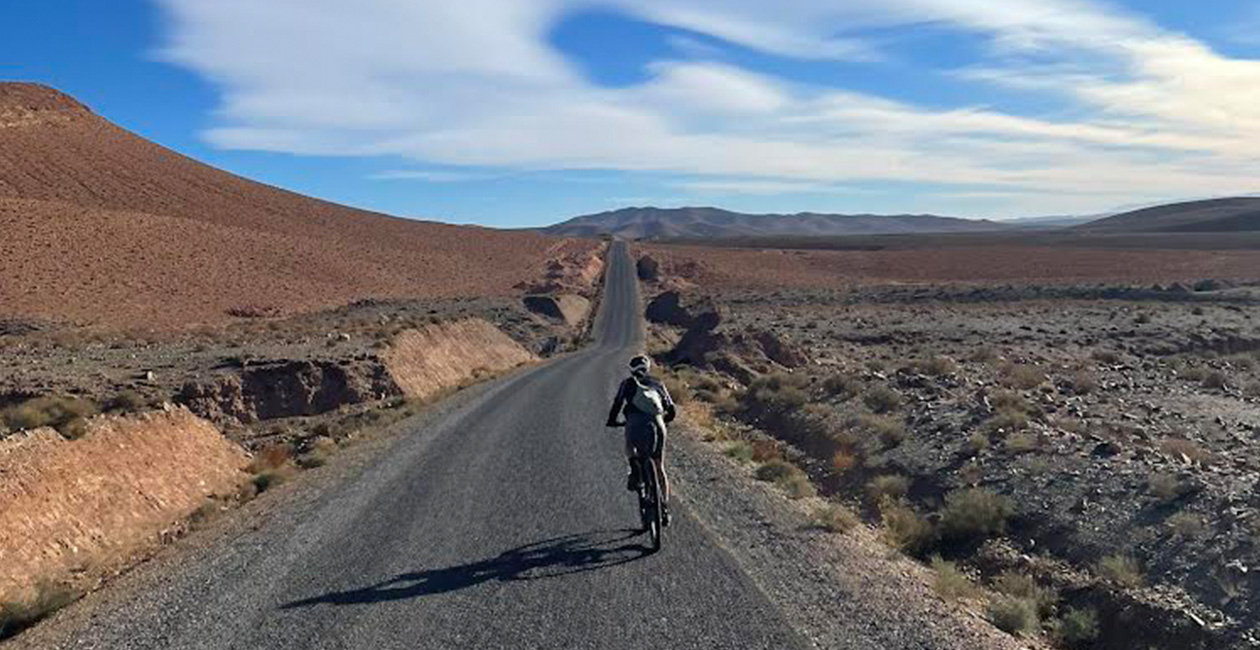
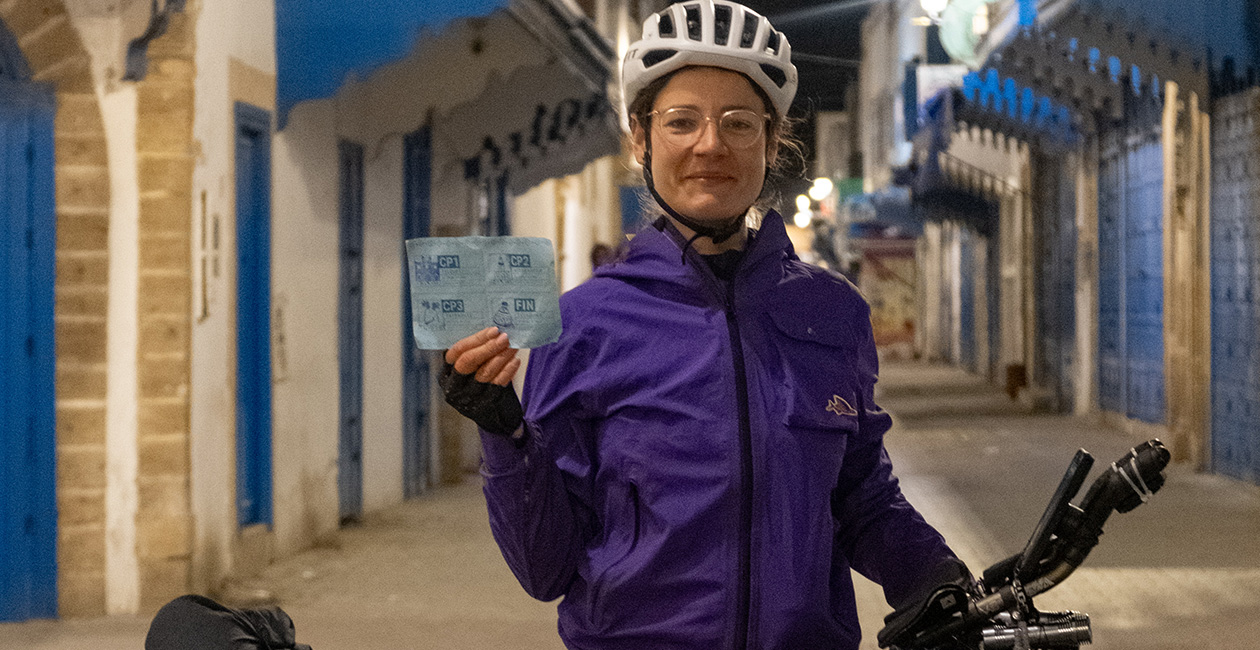
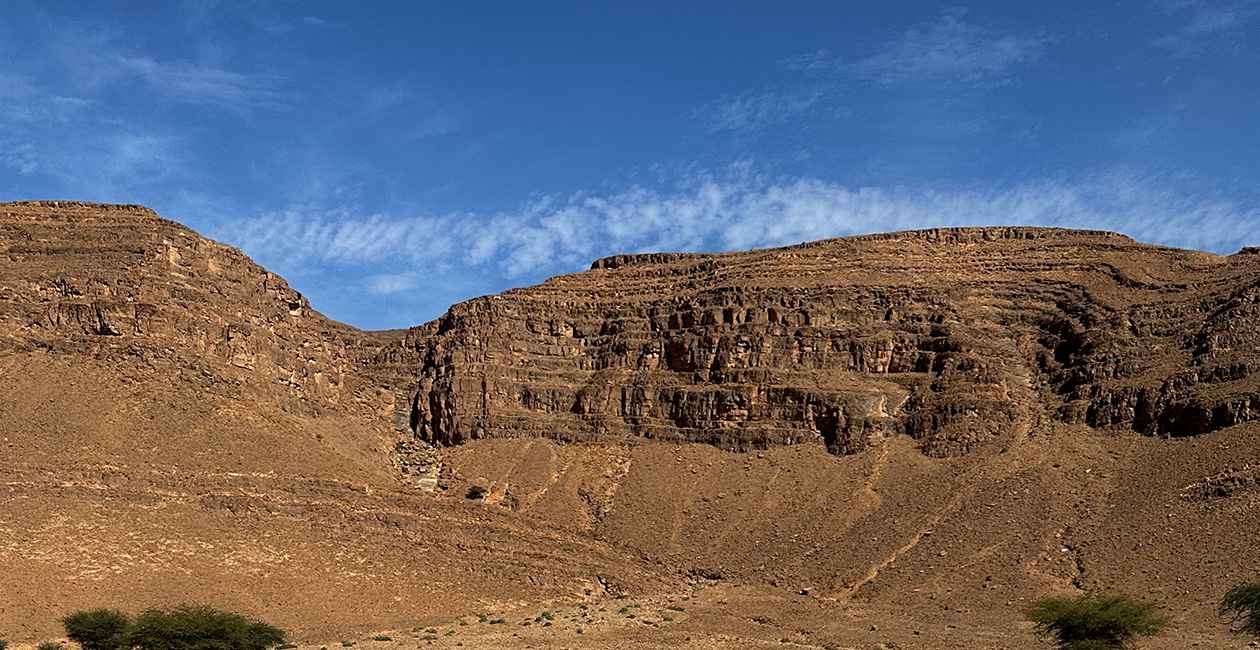
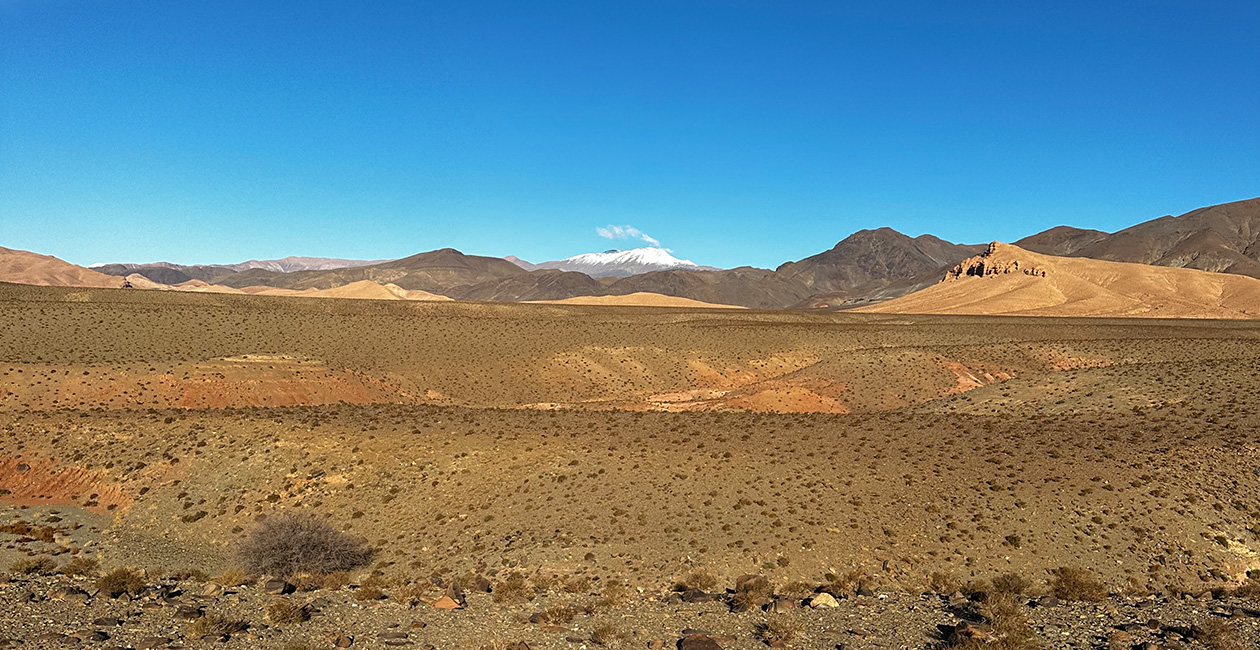
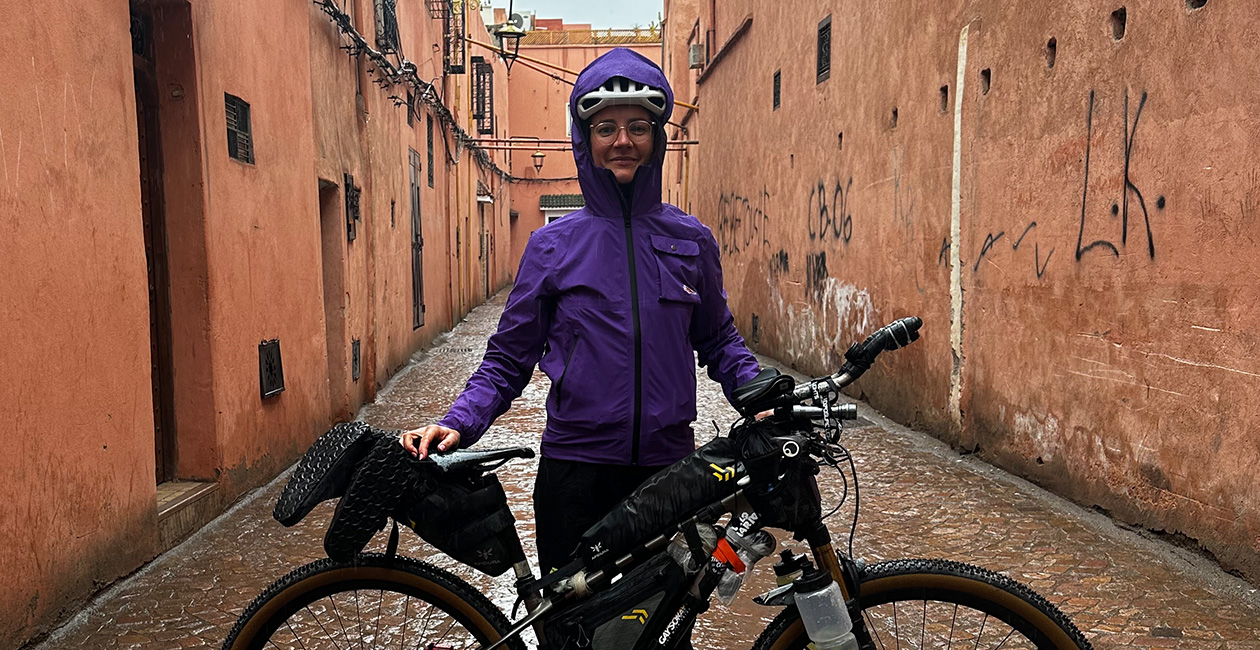
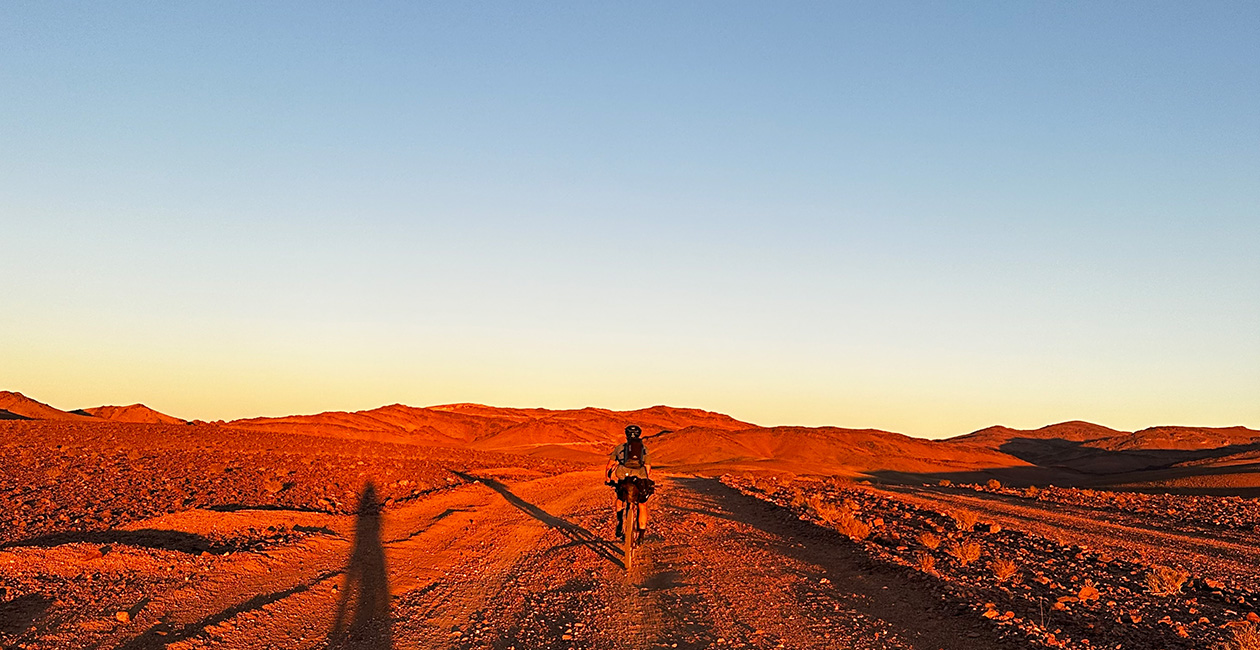
At 5h00 on the morning of the seventh day Sophie, physically tired but in good spirits, crossed the finish line where her friends were waiting for her. After stamping her brevet, she rode to a hotel where fellow Café du Cycliste athlete Adrien Liechti bought her a delicious hamburger. Only the next day did the aches and pains get the better of her and a trip to hospital confirmed the asthma attack she’d been suffering in the race final. After a few days, however, all that remained were the good memories of rising to the challenge of this incredible adventure.
For Sophie, the finish line was only the beginning: with Adrien in tow, she is now heading for Dakar, and is currently somewhere in the middle of the Sahara. Bonne route Sophie!

